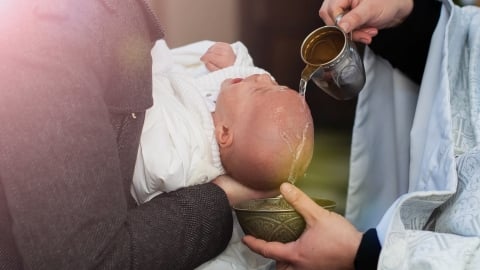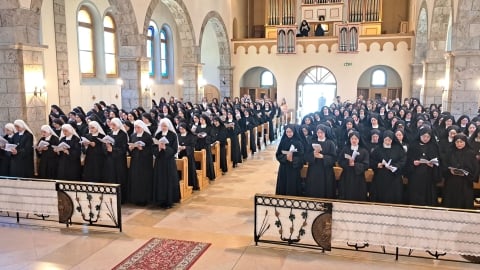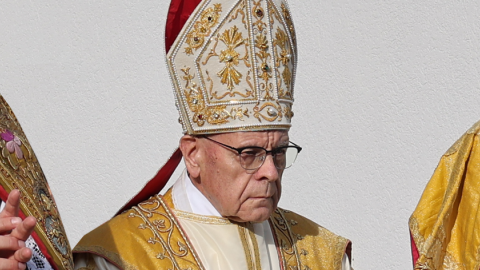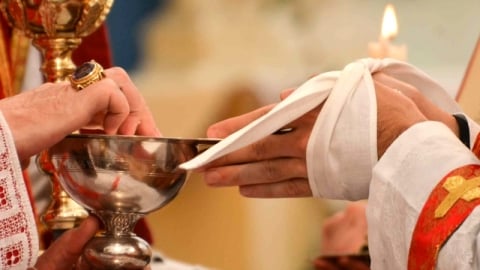Why Didn't Archbishop Lefebvre Sign the Vatican's Profession of Faith in 1989?
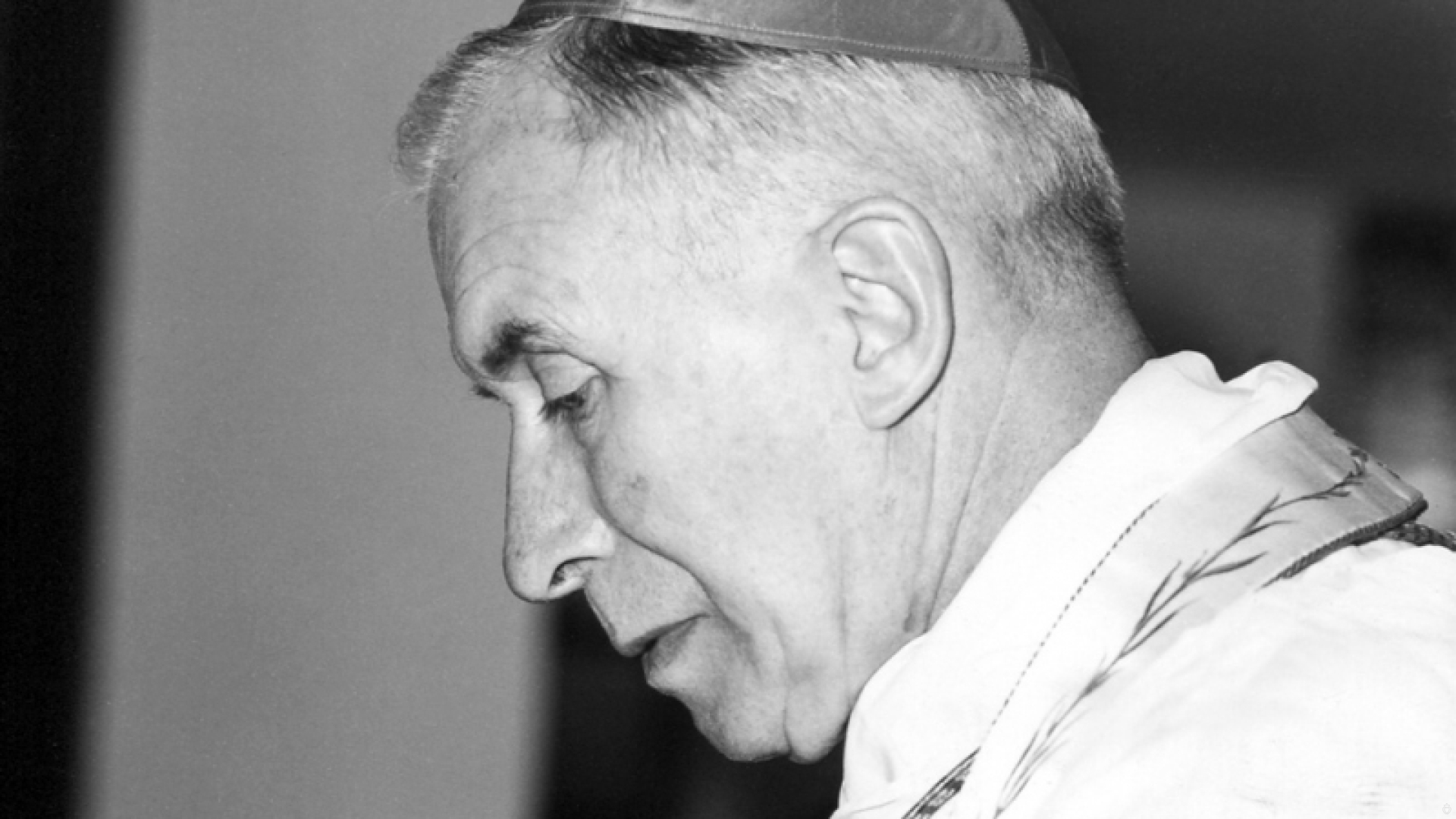
On November 19th, 1989, Archbishop Lefebvre offered Mass on the 60th anniversary of his priestly ordination. He spoke at length and beautifully about the priesthood. He also spoke about the priesthood’s enemies, especially changes in the Church’s spirit, “…opening its doors to all those who do not share our Faith, giving them the impression that there are no differences between them and us.”
The Archbishop went on to say that at that time he did not see the possibility of regular contacts with Rome, because Rome was demanding that, for any concessions to be made, the SSPX sign a new profession of Faith written in February of 1989. He equated making that profession with the explicit acceptance of the Second Vatican Council and its consequences that harmed the Faith.[1] If this was such an important issue, we should well ask…
What is the 1989 Profession of Faith?
Any profession of Faith is meant to protect the Faith, meant to be a specific formula to explicitly state the Church’s teachings for acceptance by Catholics. The 1989 Profession of Faith asks for the assent of Catholics to the Nicene-Constantinopolitan Creed and to a further explanation found in three different groups of truths.
The first group of truths is everything proposed by the Church’s Magisterium. That includes both the Extraordinary Magisterium of the Church, its “solemn judgments” and the ordinary Magisterium, what has everywhere and always been taught but never solemnly defined. The Congregation for the Doctrine of the Faith (CDF) in further explaining the text in 1998 gave as an example “the doctrine of the real and substantial presence of Christ in the Eucharist.” Those truths demand an assent of Faith.[2]
The second group of truths is everything the Church definitively proposes about faith and morals, denial of which would be a rejection of Catholic doctrine. Everyone, is required to give firm and definitive assent to these truths, based on faith in the Holy Spirit's assistance to the Church's Magisterium, and on the Catholic doctrine of the infallibility of the Magisterium in these matters.[3] As one example given, the CDF mentioned the illicitness of euthanasia.[4]
The third group of truths given are the teachings of the Pope or the College of Bishops exercising their authentic Magisterium. Those teachings demand a religious submission of mind and will.[5]
Both the first and second group of truths are part of any profession of Faith... They both require assent on the part of the believer, but of a different sort. As the CDF’s explanation says:
The difference concerns the supernatural virtue of faith: in the case of truths of the first paragraph, the assent is based directly on faith in the authority of the Word of God (doctrines de fide credenda); in the case of the truths of the second paragraph, the assent is based on faith in the Holy Spirit's assistance to the Magisterium and on the Catholic doctrine of the infallibility of the Magisterium (doctrines de fide tenenda).[6]
However, the third group introduces a term, “authentic Magisterium”, that prompts a question…
Is that why Archbishop Lefebvre opposed the 1989 Profession of Faith?
As Archbishop Lefebvre said in his sermon, the 1989 Profession of Faith would mean accepting Vatican II and its consequences. When the Profession demands an acceptance of the authentic Magisterium in the third group of truths, it references the concept of that magisterium given in Vatican II’s Lumen Gentium, repeating what is said there about it.[7]
Both Lumen Gentium and the Profession demand a religious obeisance of mind to the authentic Magisterium. That does not mean that the one making the profession is asked to accept it by the assent of an act of faith. Rather, the religious obeisance is a presumption of acceptance in favor of the superior.
Authentic Magisterium refers to teaching made in a non-definitive way by someone who can teach magisterially. A further explanation published about the 1989 Profession in 1998 said that the teachings of the authentic Magisterium were: "teachings set forth by the authentic ordinary Magisterium in a non-definitive way, which require degrees of adherence differentiated according to the mind and the will manifested" [8].
In a 1990 interview, the then Cd. Ratzinger gave as an example of the authentic Magisterium previous statements of Popes against religious freedom.[9] A pertinent example of those statements is that the “Catholic religion is the one true religion.”[10]
Since the authentic Magisterium is non-infallible and is only a presumption in the favor of a superior, we may well ask: what if the superior teaches something contrary to clearly defined teachings of the Church? In such a case, the faithful are obviously entitled to reject the new teaching. Dom Paul Nau explains this in his essay “Pope or Church”:
(Assent to the authentic Magisterium is) ...that of inward assent, not as of faith, but as of prudence, the refusal of which could not escape the mark of temerity, unless the doctrine rejected was an actual novelty or involved a manifest discordance between the pontifical affirmation and the doctrine which had hitherto been taught.[11]
An example of manifest discordance can be found in Vatican II’s Lumen Gentium. There the famous phrase is contained that the Church of Christ “subsists in” the Catholic Church instead of saying that the Church of Christ is the Catholic Church.[12] The Church of Christ would be something subsisting in the Catholic Church as a subject, but not exclusively found there. The supernatural society founded by Christ for man’s salvation can also be found elsewhere. Therefore, the Catholic Church is not identical to the Church of Christ and so the Church of Christ can extend beyond it.
That teaching is found in a Conciliar document. It also is in contradiction of the example given of authentic Magisterium given in 1990, that the Catholic religion is the one true religion. If the Catholic Church is the one true religion, then how can the Church of Christ merely subsist in it and therefore potentially be found elsewhere?
When there is a doctrine that expresses a “actual novelty” or a “manifest discordance” with previous doctrine, it can be rejected. The authentic Magisterium of Lumen Gentium is in opposition to the authentic Magisterium of the Syllabus of Errors. Which are we to follow?
In his sermon, Archbishop Lefebvre mentioned that the 1989 Profession of Faith brought things to an impasse with the Vatican. After his death, new discussions took place between the SSPX and Rome. That should make us ask…
What happened with the 1989 Profession of Faith after Archbishop Lefebvre?
In subsequent discussions with Rome, what was asked of the SSPX changed. The SSPX was no longer asked to make the 1989 Profession of Faith! Bishop Fellay, in a 2016 Conference at Port-Marly, France, explained the shift.
In effect, they (Vatican representatives) dropped some rather important things. They no longer ask us to recite the “profession of Cardinal Ratzinger.” Precisely where Archbishop Lefebvre had stumbled on a remark by Cardinal Ratzinger that had added something to the usual profession of faith. And this addition concerns what we call the authentic Magisterium. Cardinal Ratzinger, at that time, had explained that with this addition they were asking for religious submission to the documents of the authentic Magisterium, obliging Catholics to accept the Council.
This can be debated: it is true per se that we owe respectful submission to magisterial documents, an Encyclical for example. It is normal to receive this document respectfully, since it is issued by supreme authority. In itself the phrase is not shocking, it is even Catholic. But of course, when you make the connection with this Council, it starts to become more awkward.
And therefore we truly balked at this profession of faith. Well, as it turns out, they no longer demand it of us! They ask us to recite the old one that is called the Tridentine profession of faith of Pius IV. In the document they call it the “profession of the Council Fathers.” Yes, the Council Fathers-in other words, all the bishops gathered at Vatican Council II-made, at the beginning of the first session, a profession of faith that is the traditional profession of faith. Just as the Mass that was celebrated during the Council was the old Mass…[13]
Bishop Fellay went on to say that our objections to Vatican II do not mean that we claim that there’s nothing true in it. We object to the poison in it.
But the problem is not the good things that you can find in it, which actually exist. The problem is the bad things! If you put a drop of cyanide in the soup, what difference does it make it you add good vegetables, good stock, the best water that you can find? The soup is inedible because of the poison. That is what happens at the Council. That is why we say that the Council is inedible. Not because of the good things that you can find in it, but because of the poison. And to be precise, this poison is not concentrated everywhere but in a certain number of these documents about which Archbishop Pozzo says to us today: 'You are not obliged to accept them in order to be recognized as Catholic.'[14]
The very fact that Rome stopped demanding the 1989 Profession of Faith shows that at least what the SSPX objects to is open to some disagreement and that it is possible to question the authentic Magisterium. If, then, some disagreement is possible, perhaps what we should really be asking is…
What must we accept from Vatican II and post-Vatican II teaching?
Church teaching is the Magisterium, testimony given with authority in the name of Christ. It is a delegated authority, defined and limited by the safeguard and explanation of divinely revealed truths. Ecclesial authority can’t go against those Magisterial truths. What bishops or even the Pope says can’t go against Magisterial truths.[15]
What then, are we to think of statements made by churchmen that are at the least extremely problematic? For example:
The post-synodal Exhortation Amoris Laetitia has left none indifferent. But, apparently, according to the pope himself, the only possible interpretation of Chapter 8 of the document is that given by the bishops of Buenos Aires in Argentina, who openly claim that certain divorced and remarried couples can be granted access to the sacraments. “The document is very good and completely explains the meaning of Chapter VIII of Amoris Laetitia; there are no other interpretations,” responded the pope in a letter written in September 2016. And last June, the Vatican Secretariate of State recognized this response as part of the “authentic Magisterium.”[16]
The very nature of ecclesial authority is to safeguard what is divinely revealed. The authentic Magisterium can include novelties that go against previous Magisterial teaching, as we can clearly see from the above-mentioned example. When it does, we should be allowed to withhold assent.
Faith is an act of reason, though more obscure as it involves the mysteries of God. It’s an assent of the mind to the unseen. Like any rational process, it can discern what is opposed to it. Therefore, a faithful Catholic can reject what is contrary to the constant teaching of the Church in Vatican II or post-Conciliar teachings. The Catholic religion remains the one, true religion and divorce goes against the nature of marriage regardless of the age.
The unchanging nature of the Catholic Faith makes the only logical course of action to judge the teachings of Vatican II and post-Vatican II in the light of Tradition. As Archbishop Lefebvre himself told us:
Whereas for me, for us, I think that to say the conciliar documents should be judged in the light of Tradition obviously means that what contradicts Tradition should be rejected, what is ambiguous should be interpreted in accordance with Tradition, and what is in conformity with Tradition should be accepted” (December 2, 1982).[17]
We hold an authentic, unchanging Faith
A proper profession of Faith is a profession of the immutable Faith that the infallible Magisterium of the Church transmits. The authentic Magisterium presented as it was in 1989 makes it possible to affirm one thing one century and then another in a subsequent century, and all this under the guise of a “pastoral duty at a particular moment.”[18]
Archbishop Lefebvre would also tell us that we have a duty as Catholic to think!
It is up to every Christian, every Catholic, to judge what is true. He is taught the truth, he knows the truth-it is in the catechism. He knows how to read like everyone else: he is quite capable of reading the Acts of the Councils: he is quite capable of understanding and knowing what the truth is that is taught in the catechism and in his Bible and to realize that what is now being preached by his parish priests, or even by the bishop, is not in conformity with what is said in his old catechism or with what he was taught. It is up to every Catholic to defend his faith when it is attacked” (September 11, 1976).[19]
That duty to think can’t be countermanded by imposition of things that are not of the Faith. Tradition and the Magisterium of the Church go together. When there is an apparent disagreement between them, one of them must not really be there. The Faith we profess withstands the passing of centuries.
Note that Archbishop Lefebvre references what has been taught in the catechism and what has been taught by the popes. These teachings are objective reference points for what Catholics believe.
What in practice would happen to a faithful Catholic if he were to accept unthinkingly every statement of the authentic Magisterium? For him, the Catholic religion would be the one true religion one decade, and the Church of Christ would subsist in the Catholic Church and therefore also be found elsewhere the next decade. Marriage would be for life and divorce forbidden at one time and communion given to the divorced and remarried at a later one. The unchanging Tradition of the Catholic Church conveyed by the Magisterium would be degraded by something that is called Magisterium!
Archbishop Lefebvre said in his sermon on the 60th anniversary of his ordination that we need to profess our Faith. He gives as an example of professing the Faith the ending to St. Pius X’s Anti-Modernist Oath:
I firmly hold and shall hold to my dying breath the belief of the Fathers in the Charism of truth, which certainly is, was, and always will be in the succession of the episcopacy, from the Apostles. The purpose of this (charism) is, then, not that dogma may be tailored according to what seems better and more suited to the culture of each age; rather, that the absolute and immutable truth preached by the Apostles from the beginning may never be believed to be different, may never be understood in any other way.[20]
What the Archbishop repeats could never be more true. True Magisterium is the transmission of immutable truth. No matter who is talking, to profess anything else is to get wrapped up in the confusion of a very “un-authentic” Magisterium.
[1] https://www.sspxasia.com/Documents/Archbishop-Lefebvre/Archbishops-Serm…
[2] https://www.vatican.va/roman_curia/congregations/cfaith/documents/rc_co…
[3] Ibid.
[4] Ibid.
[5] Ibid.
[6] Ibid.
[7] Lumen Gentium, Ch. 3, n. 25
[8] https://www.vatican.va/roman_curia/congregations/cfaith/documents/rc_co…
[9] Cardinal Joseph Ratzinger, “Theology is Not Private Idea of Theologian,” L’Osservatore Romano, English Weekly Edition, July 2, 1990, 5
[10] Syllabus of Errors, proposition 21
[11] Nau, Pope or Church? Pg. 29
[12] Lumen Gentium I, 8
[13] Bishop Fellay, Pastoral Council Open for Debate, Conference given at Port-Marly (France), October 8, 2016
[14] Ibid.
[15] Fr. Gleize, A Matter of Principle, The Angelus, July-August 2018
[16] Ibid.
[17] Ibid.
[18] Cardinal Joseph Ratzinger, “Theology is Not Private Idea of Theologian,” L’Osservatore Romano, English Weekly Edition, July 2, 1990, 5
[19] Fr. Gleize, Magisterium and Faith, The Angelus, September-October 2012
[20] https://www.sspxasia.com/Documents/Archbishop-Lefebvre/Archbishops-Serm…
sspx.org - 03/23/2023
